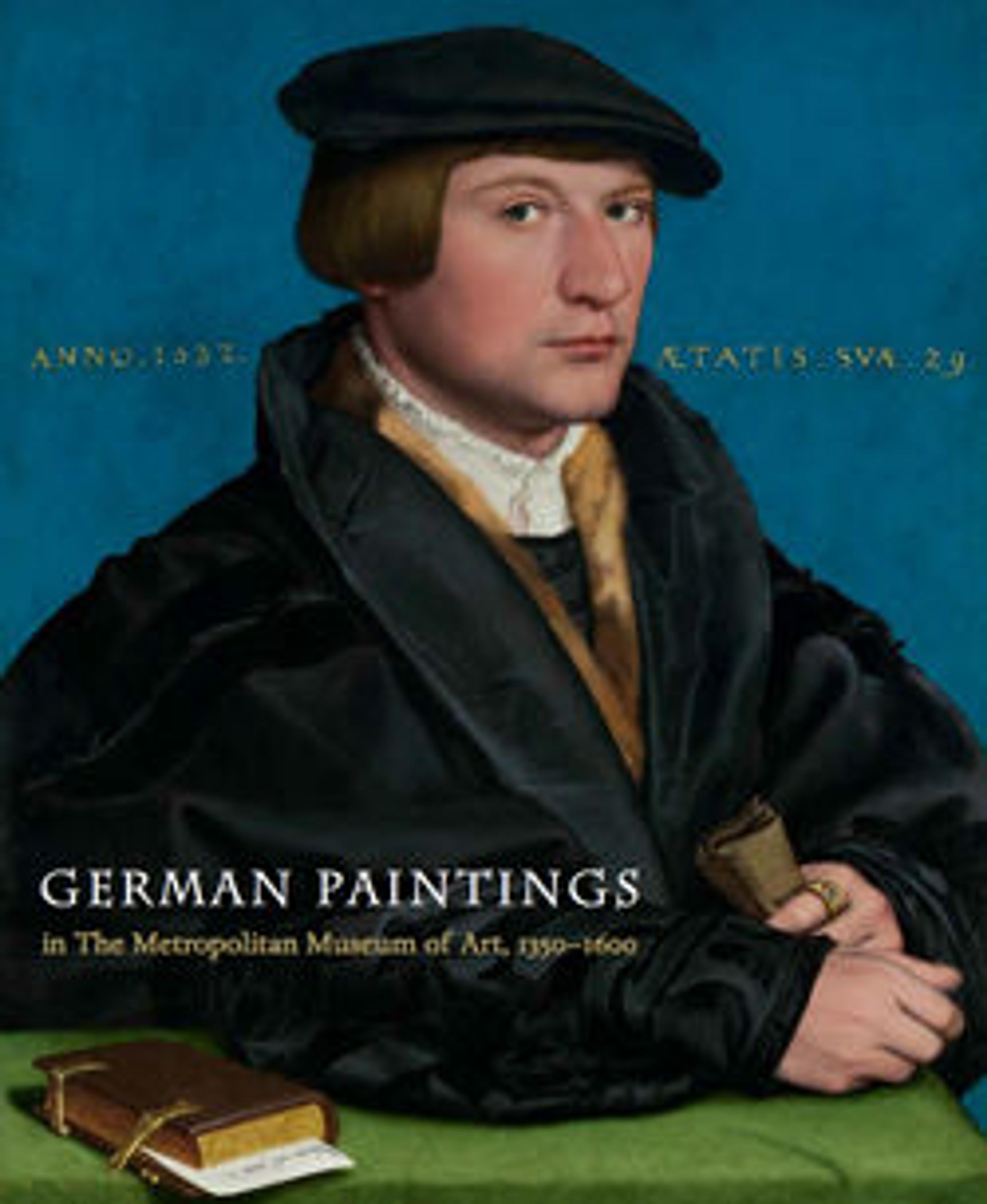The Burg Weiler Altar Triptych (Altarpiece with the Virgin and Child and Saints)
This imposing and well-preserved altarpiece achieves monumentality through the modeling and scale of the major figures. The grouping of these figures in a frieze-like arrangement and the repeating patterns of the floor and background provide visual unity. The saints on either side of the Virgin are identified both by the inscriptions below and by their attributes. From left to right are SS. Jodokus, Wendel, Apollonia, Barbara, Catherine, Lawrence, Sebastian, and Maurice. A pair of angels hovers above while gently lowering an elaborate crown onto the Virgin's head. The outer panels represent St. Theodulus and martyrs of the Theban Legion, revealed when the altarpiece is closed.
Artwork Details
- Title: The Burg Weiler Altar Triptych (Altarpiece with the Virgin and Child and Saints)
- Artist: Master of the Burg Weiler Altarpiece (German, Middle Rhineland, ca. 1470)
- Date: ca. 1470
- Geography: Made in Baden-Württemberg (Nordwürttemberg), Middle Rhineland, Germany
- Culture: German
- Medium: Oil on wood, gold ground
- Dimensions: central panel: 68 1/2 x 60 in. (174 x 152.4 cm); each wing; 68 1/2 x 26 in. (174 x 66 cm)
- Classification: Paintings-Panels
- Credit Line: The Cloisters Collection, 1953
- Object Number: 53.21
- Curatorial Department: Medieval Art and The Cloisters
More Artwork
Research Resources
The Met provides unparalleled resources for research and welcomes an international community of students and scholars. The Met's Open Access API is where creators and researchers can connect to the The Met collection. Open Access data and public domain images are available for unrestricted commercial and noncommercial use without permission or fee.
To request images under copyright and other restrictions, please use this Image Request form.
Feedback
We continue to research and examine historical and cultural context for objects in The Met collection. If you have comments or questions about this object record, please complete and submit this form. The Museum looks forward to receiving your comments.
